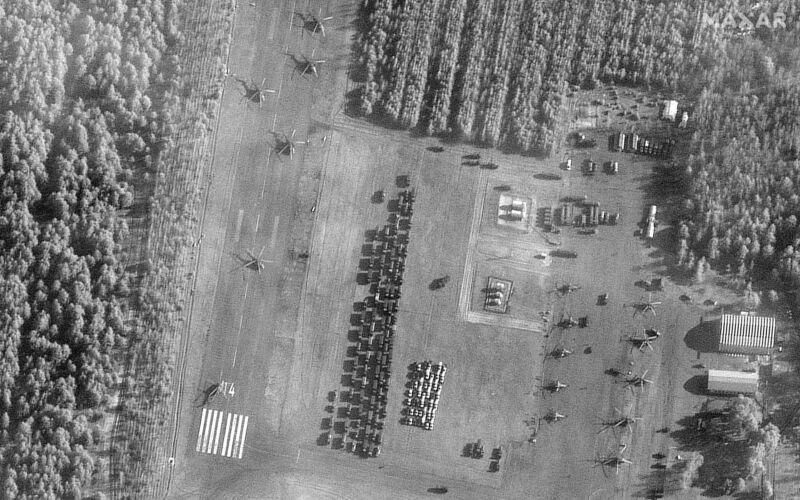
Maxar Technologies
Ukrainian entrepreneur Max Polyakov was emotional and at times angry during a 20-minute conversation with reporters Monday night as he spoke about the Russian army’s attack on his home country.
“In an hour there will be another attack on Kiev,” Polyakov said pointedly, pointing to his watch. “We need the data now.”
The data he referred to was real-time observations from commercial satellites flying over Ukraine. Polyakov begged the operators of these satellites, mainly Western companies that sell data to governments and private customers, to freely share their data with one of his companies, EOS Data Analytics.
Polyakov said EOS would quickly process this data for passes about Ukraine and provide some basic analysis before sending the information to the Ukrainian Defense Service and Ministry of Digital Transformation. EOS has the ability to quickly distinguish between 18 different types of Russian military vehicles, he said.
“Right now we need this information,” he said. ‘Every night we are bombed and at night we are blind. We need this information, please.”
Polyakov noted that in recent days, commercial companies have released high-resolution satellite images in the public domain to demonstrate their capabilities. While impressive, he acknowledged, such publications have been more useful for public relations purposes than can be carried out by the Ukrainian military. The data is often two or three days old, Polyakov said. “We don’t need to know where Russian tanks were two days ago,” he said.
He also mentioned the need for a special kind of data that has become increasingly popular in recent years, which comes from synthetic aperture radar, or SAR, satellites. Unlike passive optical satellites that collect data in the visible, near-infrared and short-wave infrared part of the spectrum, these satellites emit their own energy. They then record the energy reflected from the Earth’s surface.
The main advantage of SAR satellites is that they can collect data day and night and through clouds. Polyakov said SAR satellite data is important for understanding Russian troop and vehicle movements at night and noted that clouds cover about 80 percent of Ukraine during the day.

Noosphere/Zoom
Polyakov is calling on Planet Labs, Maxar Technologies, Airbus, SI Imaging Services, SpaceView, BlackSky, Iceye, Capella and other companies that can provide the necessary data.
During the conversation with reporters, Polyakov admitted that he made an “aggressive” request. The 44-year-old entrepreneur has had a strained relationship with US regulators and was recently forced – and unjustly according to some observers – to sell his majority stake in US-based launch company Firefly. However, the passion he clearly feels for preserving his homeland is hard to deny.
It is not immediately clear how commercial companies will react. This is truly the first major war in which commercially available satellite imagery has played a major role in providing open source information on troop movements, military build-up in neighboring countries, refugee flows and more.
Previously, such data was owned and largely collected by a handful of countries. The role of such a powerful, widely available technology has yet to be defined in a war zone, and it’s not clear whether private companies are willing to freely hand over raw data to another commercial company with the intent of helping a party to the conflict.
But we’re going to find out.

